Homemade blueberry fruit leather is one of my favorite healthy snack recipes. It's also known as blueberry candy. Wild blueberries make a great leather as they can be harvested in quantity and don't have large seeds. That said, you can use a mix of store-bought or frozen fruit too.
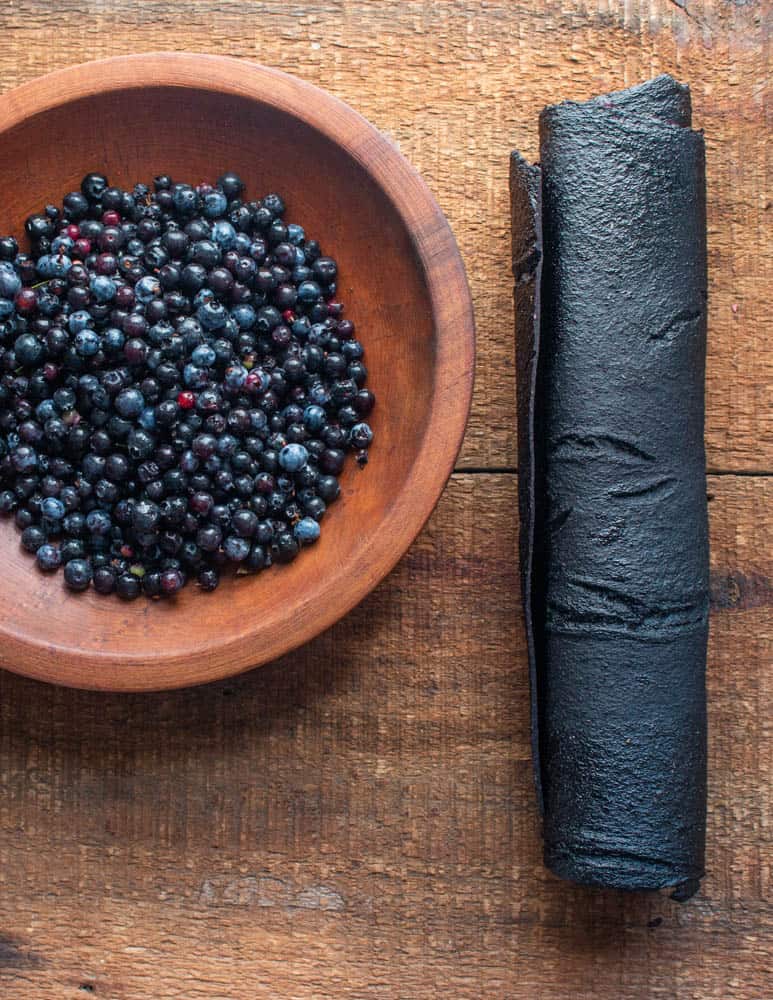
Once you've made fruit leather once or twice, I suggest you just listen to the fruit and your instincts instead of following a recipe exactly.
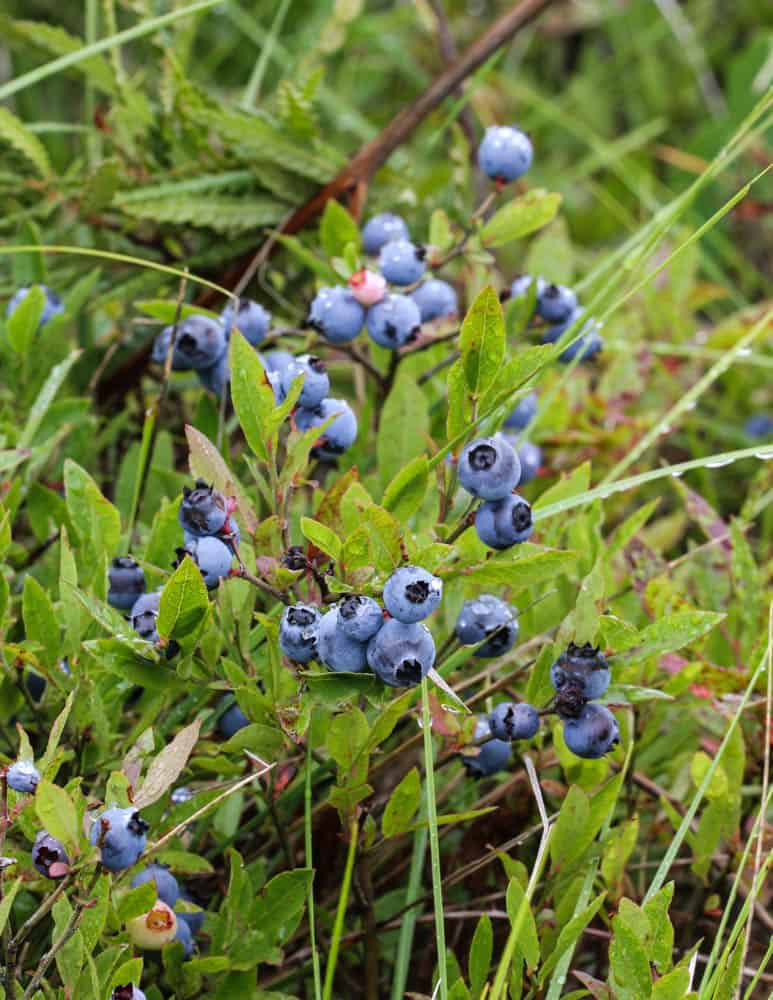
All you need to do is cook some fruit down to remove water, then puree it until smooth. The puree is spread it out onto a silicone mat or a sheet of lightly oiled parchment, and dried until pliable.
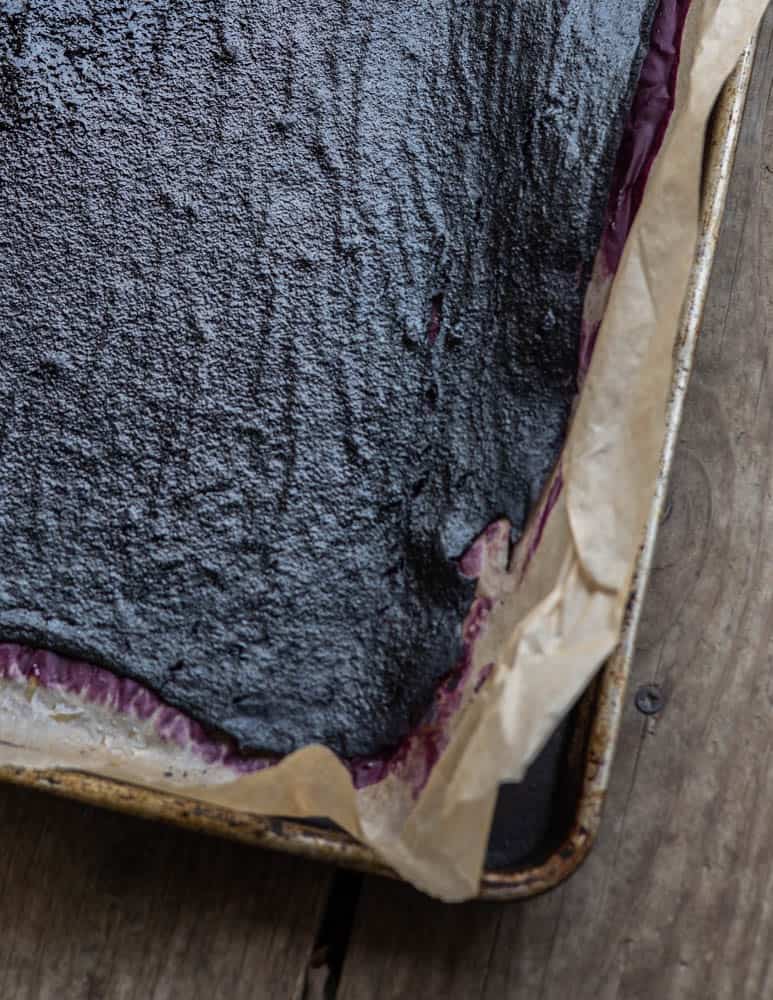
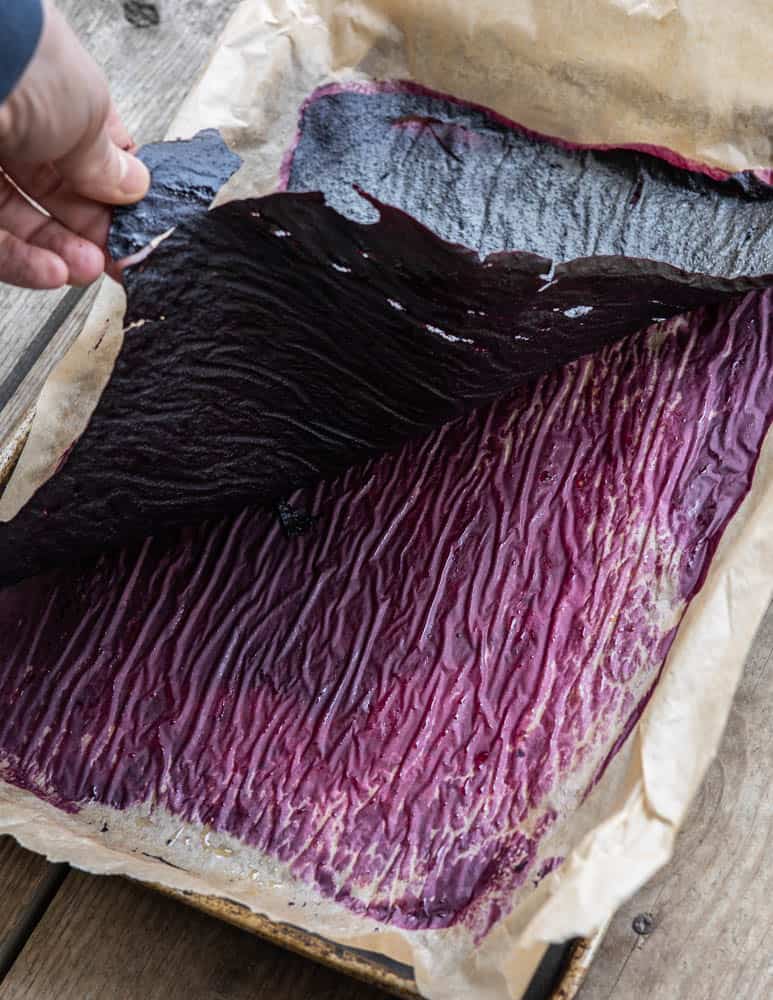
After drying, the leather will keep for months in the fridge, or the fruit strips can be vacuum sealed and frozen. You can potentially store it at room temperature too if it's in a cool dry place, but make sure to check on it once in a while to make sure there's no mold.
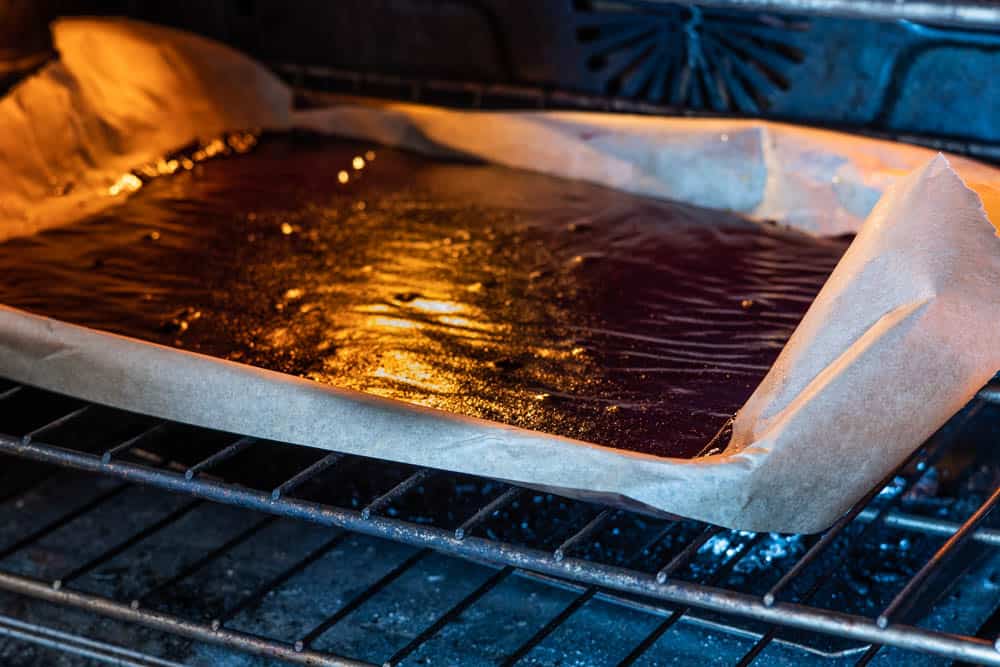
Using already juiced berries
Blueberry leather can be made from fresh or frozen wild blueberries, but one thing that you have to know is that you can make it from the by-product of making blueberry juice reduction or blueberry molasses.
I make blueberry molasses by heating large amounts of wild blueberries (typically at least a gallon) until they give up their liquid.
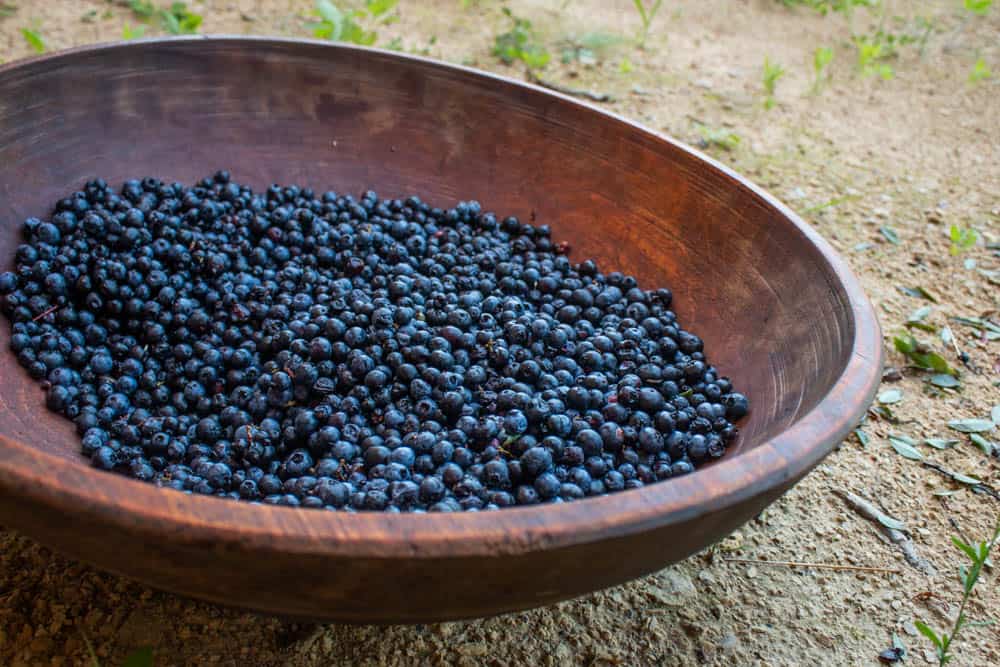
I strain the liquid off, reduce it to 30% of it's original volume, adding a little sugar as a preservative.
The leftover wild blueberries can be pureed with maple syrup to make a fruit paste and dried just like you would with fresh blueberries. It's two products for the price of one! For more on that see Wild Blueberry Molasses.
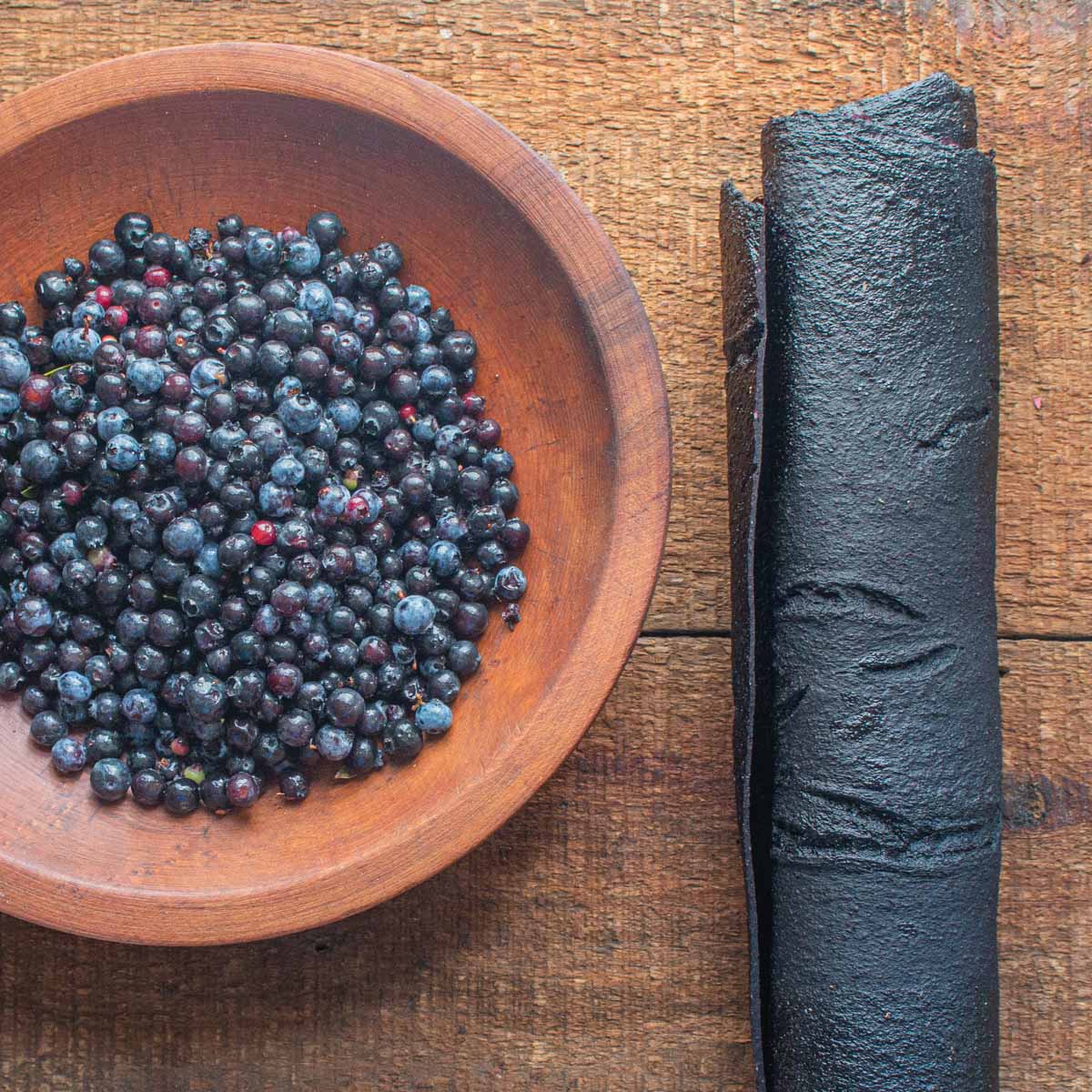
Homemade Blueberry Leather
Equipment
- 1 oven or dehydrator
- 1 Parchment
Ingredients
- 1.5 lbs wild blueberries
- 2 tablespoons maple syrup You can double the syrup if you want it more sweet, but I hardly think it's necessary.
- Tiny pinch of salt
- 1 dash of lemon juice optional
Instructions
- Put the blueberries, pinch of salt and maple syrup in a 3 qt or similar sized saucepot and bring to a simmer. Turn the heat to medium-low and cook until the pan is nearly dry, and only a small amount of liquid remains, about 30-45 minutes.
- Transfer the blueberries to a blender and puree until very smooth, adding the dash of lemon juice, then pour onto a cookie sheet lined with a silicone baking mat. You can also spread the mixture onto a lightly oiled sheet of parchment paper.
Drying in an oven
- Preheat the oven to 170 F and dry for 3-4 hours or until the fruit leather is dry, but still pliable. Make sure to keep an eye on it so it doesn't get too brittle.
Drying in a dehydrator
- Dehydrate the leather on the fruit setting, or roughly 135 F for 6-8 hours, flipping it halfway through when the sheet can be lifted up in one pieces.
- When the leather is done it should hold its shape, but still be pliable. Peel it off the mat or parchment, cut it into squares or strips and put in a container with a tight fitting lid and refrigerate. It will keep for a very long time in the fridge.
Storing
- Some people store this at room temperature. I don't recommend this as it can mold if it isn't completely dried.

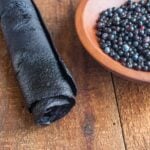
Sally
Yum, perfect recipe
Alan Bergo
Thanks Sally.